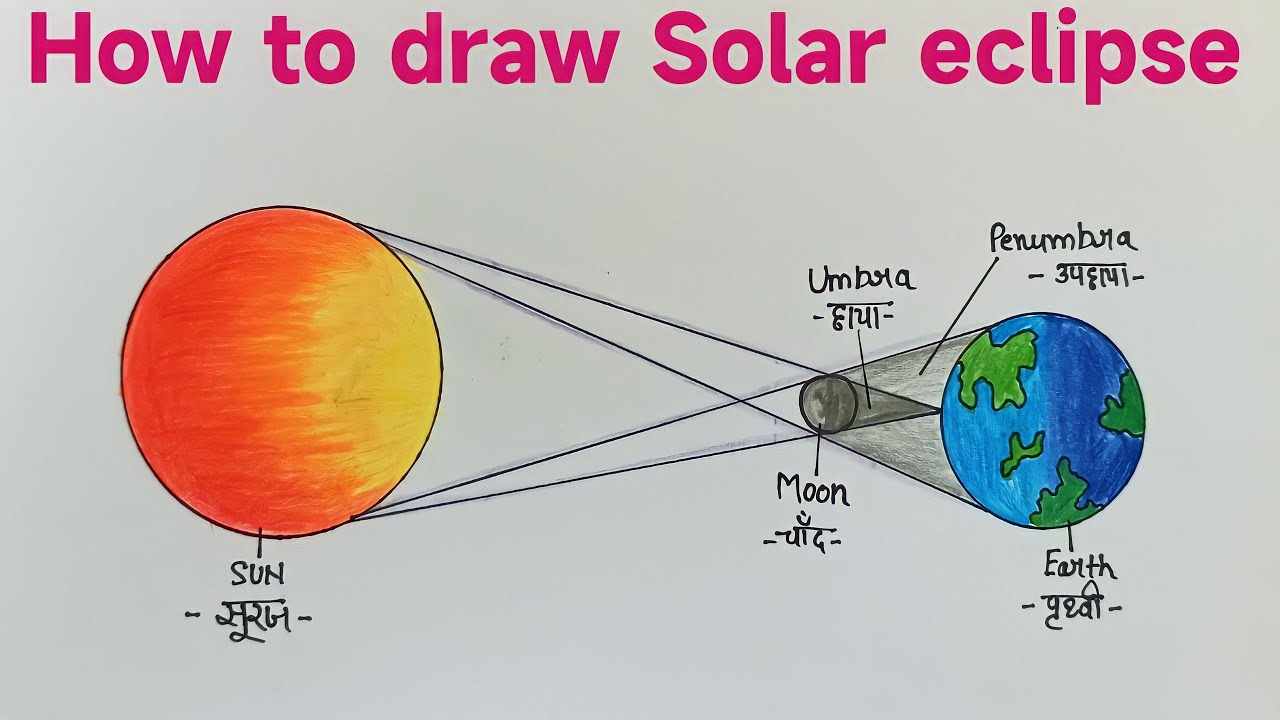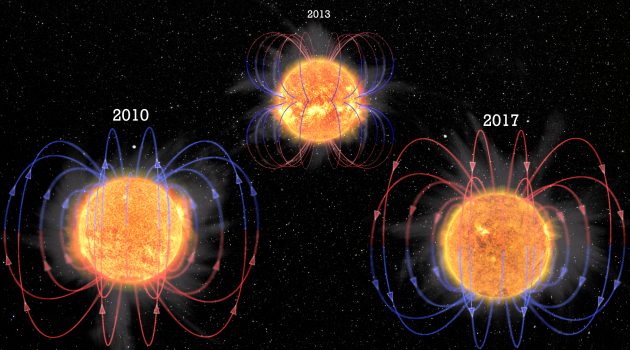


A rare and fascinating celestial event, a total solar eclipse will be visible tonight for millions of people around the world. While it won't be visible in India, you can still watch it through a live stream. Find out how astronomers use mathematics and advanced techniques to accurately predict eclipses and how they can affect animals in unexpected ways. Don't miss out on this once-in-a-lifetime event!
The Allure of Celestial Events: A Total Solar Eclipse
Introduction
Celestial events have captivated humanity for centuries, and a solar eclipse is among the most awe-inspiring. Occurring when the Moon passes directly between the Sun and Earth, it blocks the Sun's light, casting a shadow on our planet. This rare and captivating phenomenon has prompted both scientific inquiry and cultural fascination.
Prediction and Mathematics
The prediction of solar eclipses is a testament to the power of mathematics and astronomy. Astronomers use complex calculations based on celestial mechanics to determine the exact time, location, and duration of future eclipses. By studying the intricate movements of the celestial bodies involved, they can anticipate these events with remarkable accuracy.
Effects on Animals
Intriguingly, solar eclipses have been observed to elicit peculiar behaviors in animals. During totality, when the Sun is completely obscured, some animals may exhibit signs of confusion, disorientation, or even fear. This is thought to be due to the sudden and dramatic change in light conditions, which can disrupt their circadian rhythms and instinctual behaviors.
Upcoming Total Solar Eclipse
On April 8, 2024, a total solar eclipse will traverse parts of North America, Mexico, and central Canada. Unfortunately, India will not be within the path of totality. However, live streams and other virtual platforms will allow individuals worldwide to witness this celestial spectacle safely and conveniently.
Top 5 FAQs and Answers
1. What is the difference between a total, partial, and annular solar eclipse?
2. How often do total solar eclipses occur?
3. Are solar eclipses dangerous to look at?
4. What cultural significance do solar eclipses have?
5. What was the longest total solar eclipse in history?

Thalassaemia, a genetic blood disorder that affects thousands of children in India, is still relatively unknown to the public. On 8 May, World Thalassaemia Day is celebrated to raise awareness about the disease and promote early detection and treatment. Stem cell transplant is the only way to cure thalassaemia completely, but finding a matching donor is a challenge for many patients. This annual observance highlights the importance of understanding and preventing thalassaemia to improve the lives of children and their families.

A new meta-analysis of 15 separate studies conducted by experts at Maharishi International University reveals the potential of transcendental meditation (TM) in relieving symptoms of post-traumatic stress disorder (PTSD). With evidence of its effectiveness in as little as a few weeks, TM offers a safe and gentle alternative to commonly used therapy methods that can be unsettling for some individuals. The results show promising potential for using TM as a solution for those suffering from the lasting effects of PTSD.

The India Meteorological Department (IMD) has projected that India is expected to experience above-normal rainfall during the upcoming southwest monsoon season, which can result in a bountiful harvest for the agriculture-centric economy. However, areas of Tamil Nadu and the northeastern region may experience below-normal rainfall, while Marathwada and adjacent Telangana regions may see above-normal showers. The IMD has forecasted a cumulative rainfall of 105% of the long-period average for June to September, bringing much-needed relief to the farming sector.

In the world of insects, few are as fascinating as the potter wasp. With the ability to build intricate mud nests and a unique method of storing prey for their young, these small predators are a wonder to behold. Learn more about these intriguing insects and the misconceptions surrounding them in this eye-opening article.

In a mind-boggling discovery that has garnered the attention of astronomers and space weather experts, recent research reveals that the Sun may have undergone a sudden and unexpected shift in its internal dynamics. This change, specifically in the Sun's Coronal Global Circulation (CGC), could potentially lead to a new, century-long solar cycle – a once-in-100-year event that may bring about prolonged and intense space weather conditions. Scientists are concerned about the potential impacts on our modern infrastructure, from satellites and power grids to aviation safety and national security. With the Sun seemingly writing a new rulebook, researchers are racing to keep up with this mysterious transformation.

With World Malaria Day approaching, it is important to understand the severity of this disease and the steps one can take for a speedy recovery. This year's theme, "Malaria Ends With Us: Reinvest, Reimagine, Reignite," aims to re-energize efforts towards eliminating malaria. From getting enough rest to staying hydrated and following proper nutrition, these tips can help in the treatment of malaria. Adhering to prescribed medication and seeking follow-ups with healthcare providers are also crucial for a full recovery.

A diverse group of individuals, including a genius with the world's highest IQ, a psychic with a museum in Tel Aviv, a skeptic Italian physicist, a researcher of the transition between life and death, and a biologist and writer, share their unique perspectives on the enduring mystery of what happens after we die. While some believe in an afterlife and the possibility of reuniting with loved ones in a different dimension, others dismiss such notions as fear-driven or scientifically implausible. Despite the conflicting viewpoints, the curiosity and debate surrounding this timeless topic continue.

As the world celebrates Earth Day, environmentalists are emphasising the need to shift towards renewable energy, particularly solar energy, to combat the ongoing climate crisis. With the theme 'Our Power, Our Planet', the focus is on raising awareness about the adoption of natural resources. Renewable energy is crucial for safeguarding natural resources and local communities, and experts are calling for the rapid transition to clean, sustainable sources like solar and biomass. The state of Telangana has abundant sunlight making solar energy a viable option, and it is essential for the government to introduce innovative initiatives to promote its adoption across all sectors. By embracing renewable energy, we can contribute to a greener tomorrow for our planet.

Professor Ning Zeng of the University of Maryland came up with the idea of burying dead trees instead of burning them to prevent carbon emissions into the atmosphere. Inspired by the durability of ancient wood found in archaeology, Zeng enlisted the help of a farmer in Maryland to bury 100 tons of unused and damaged trees on his property. However, Zeng faces a roadblock from government permits as burying wood is classified as a landfill and requires time-consuming approvals.

Researchers from the University of Helsinki and the Finnish Geospatial Institute have set up a long-term experiment using laser scanning technology to track the growth and phenology of individual trees. The study, the first of its kind, found that species richness, competitive pressure for light, and water availability all play a role in the timing of spring leaf burst and fall leaf senescence. This experiment provides a better understanding of how local factors impact tree growth and phenology, and the results have been published as open data for further research.